Have you ever wondered what makes Japanese textiles so special? If you’re interested in traditional Japanese crafts, let me tell you about one of the most incredible cultural experiences you can have – the annual Hakata Weaving Exhibition.
- What Is the Hakata Weaving Exhibition and Why Should You Care?
- Understanding Hakata Weaving: A Brief Introduction
- What to Expect at the Hakata Weaving Exhibition
- The Perfect Setting: Chokushijotenzenji Temple
- Fashion Inspiration: What Other Visitors Wear
- Planning Your Visit: Practical Information
- Why This Exhibition Matters for Cultural Understanding
- Final Thoughts: A Cultural Experience We Won’t Forget
What Is the Hakata Weaving Exhibition and Why Should You Care?
Picture this: you’re walking through a serene Buddhist temple, surrounded by the most exquisite handwoven textiles you’ve ever seen. That’s exactly what awaits you at Fukuoka’s Hakata Weaving Exhibition, a 121-year-old tradition that opens the doors of a normally private temple to showcase masterful Japanese textile art.<Official web site>
Here’s what makes this exhibition so special:
- It’s held at Chokushijotenzenji Temple, usually closed to the public
- Features brand-new works from master artisans and weavers
- Includes pieces by Living National Treasures (Japan’s most honored craftspeople)
- Best of all? It’s completely FREE!
Understanding Hakata Weaving: A Brief Introduction
Hakata weaving (Hakata-ori) is a traditional Japanese textile craft that originated in Fukuoka more than 700 years ago. Its uniqueness lies in the use of thousands of fine warp threads and thick weft threads, which are powerfully beaten together, producing exceptionally durable and visually striking fabrics. These textiles are primarily used for kimono obi (sashes), valued for their resistance to loosening and beautiful patterns that are expressed mainly through the arrangement of warp threads.
The craft is highly esteemed and officially recognized as a Traditional Craft Product of Japan. When examined up close, Hakata-ori’s intricate designs and masterful weaving highlight a level of artistry and precision that is truly breathtaking.
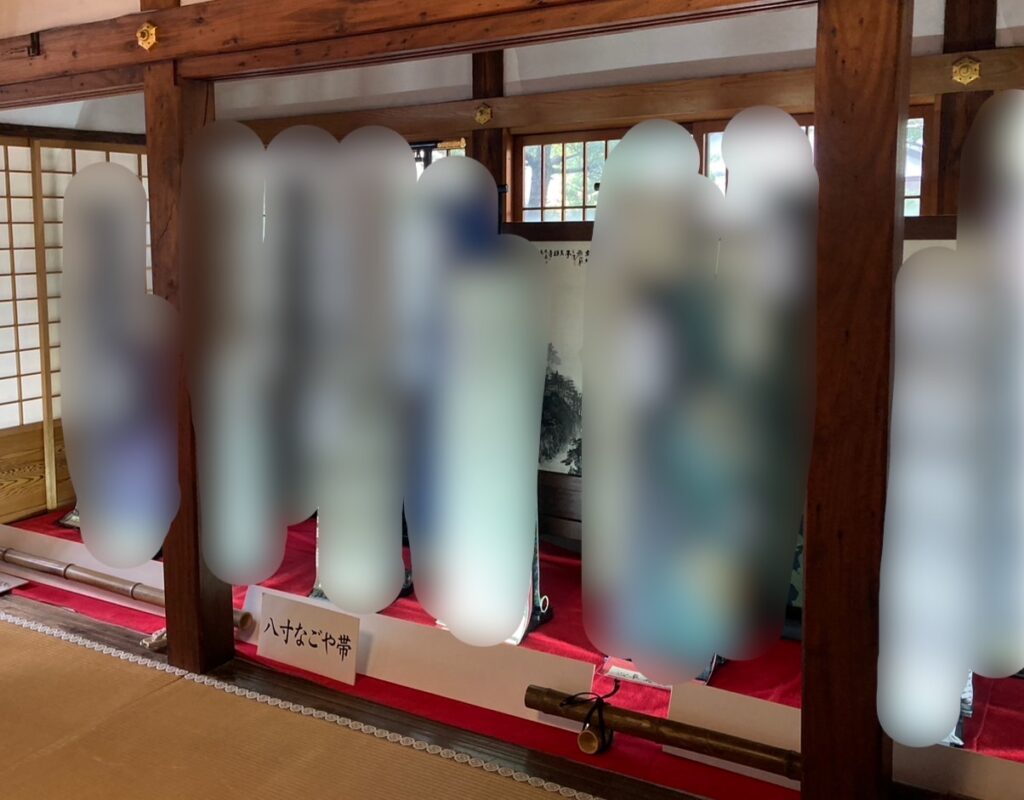
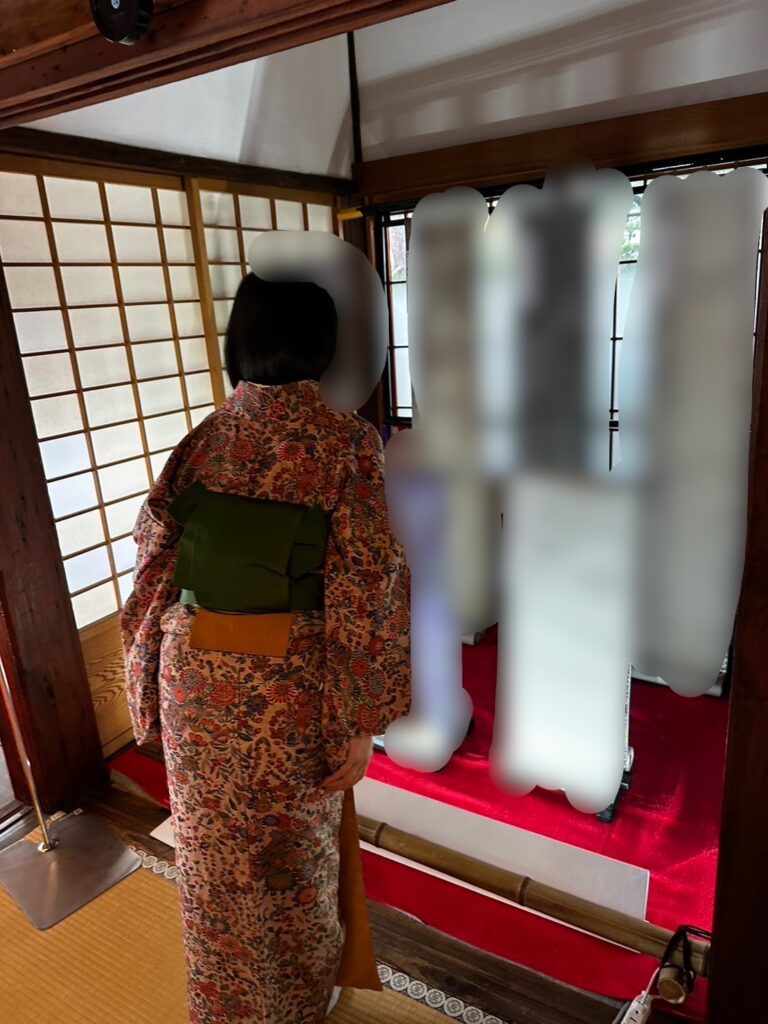
↑me
What to Expect at the Hakata Weaving Exhibition
The Exhibition Experience
Unlike shopping in stores where you might feel pressure to buy, this exhibition lets you appreciate these textile masterpieces as pure art. You can get surprisingly close to each piece (though touching isn’t allowed) and really examine the incredible detail work.
What you can see:
- Traditional Hakata patterns with geometric designs
- Modern interpretations featuring flowers, animals, and even tiger faces
- Experimental pieces that push the boundaries of traditional weaving
- Works that blur the line between craft and fine art
Interactive Experiences
Don’t just observe – participate! The exhibition offers hands-on Hakata weaving experiences where you can try the traditional techniques yourself. It’s a wonderful way to truly appreciate the skill required for this ancient craft.
Pro tip: If you’re wearing a kimono to the exhibition (which I highly recommend), bring a tasuki – a special sash that keeps your sleeves out of the way while working.
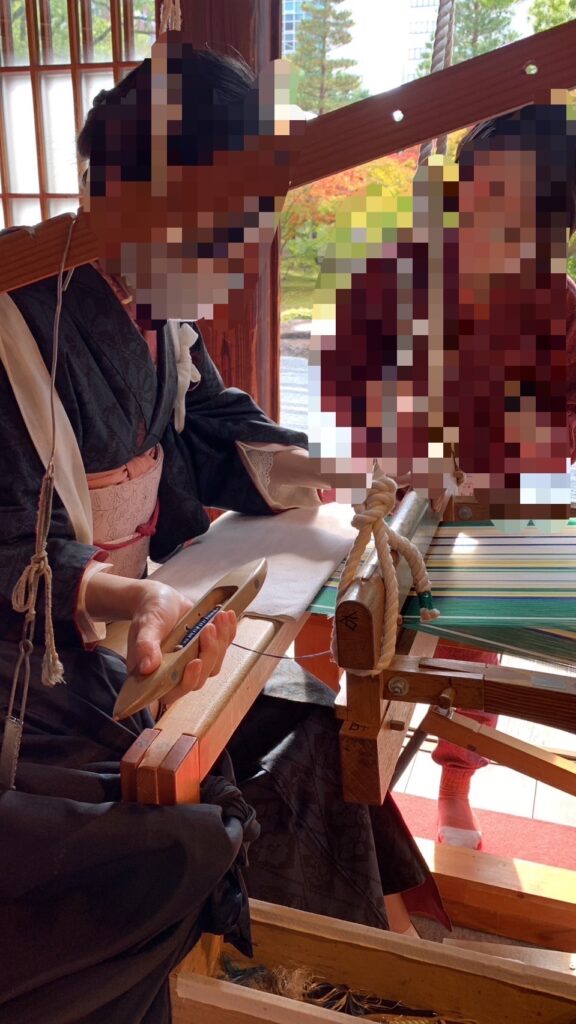
The Perfect Setting: Chokushijotenzenji Temple
The temple itself adds another layer of magic to the experience. As you move between exhibitions, you’ll encounter beautiful traditional gardens that seem to exist in their own peaceful bubble. There’s something deeply calming about viewing these textiles in such a spiritual setting.
Fun fact: This temple isn’t just beautiful – it’s historically significant as the birthplace of udon noodles, soba noodles, and Hakata weaving itself!

Fashion Inspiration: What Other Visitors Wear
One of my favorite aspects of attending this exhibition is seeing how other kimono enthusiasts coordinate their outfits. Fukuoka has an surprisingly vibrant kimono community, and exhibition day becomes an informal fashion show of traditional Japanese dress.
My Personal Style Journey at the Exhibition
First Visit Outfit: Since it was raining, I chose practical Oshima tsumugi – a type of silk that’s both durable and water-resistant. The kimono itself was quite subdued, so I brightened it up with a cheerful pink obi. I even made my own han-eri (collar accent) by adding lace to plain white fabric – a simple DIY project that added a personal touch.
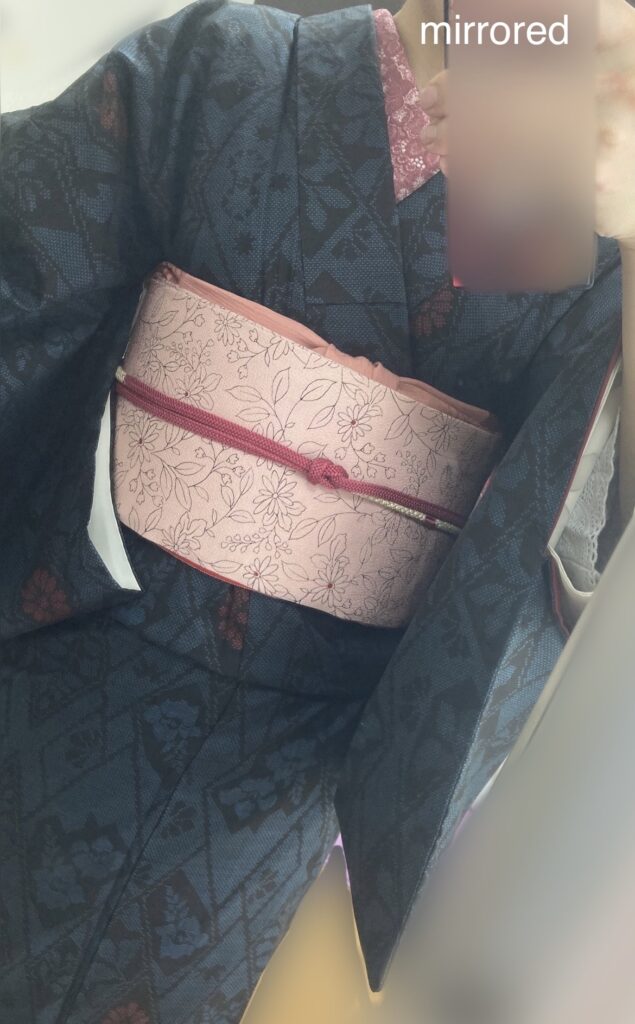
Second Visit Outfit: I went for autumn colors with a simple, solid half-width obi paired with a sarasa pattern kimono. Looking back, it might have been a bit too understated, and my obi tying wasn’t my best work, but that’s part of the learning process with kimono wearing!
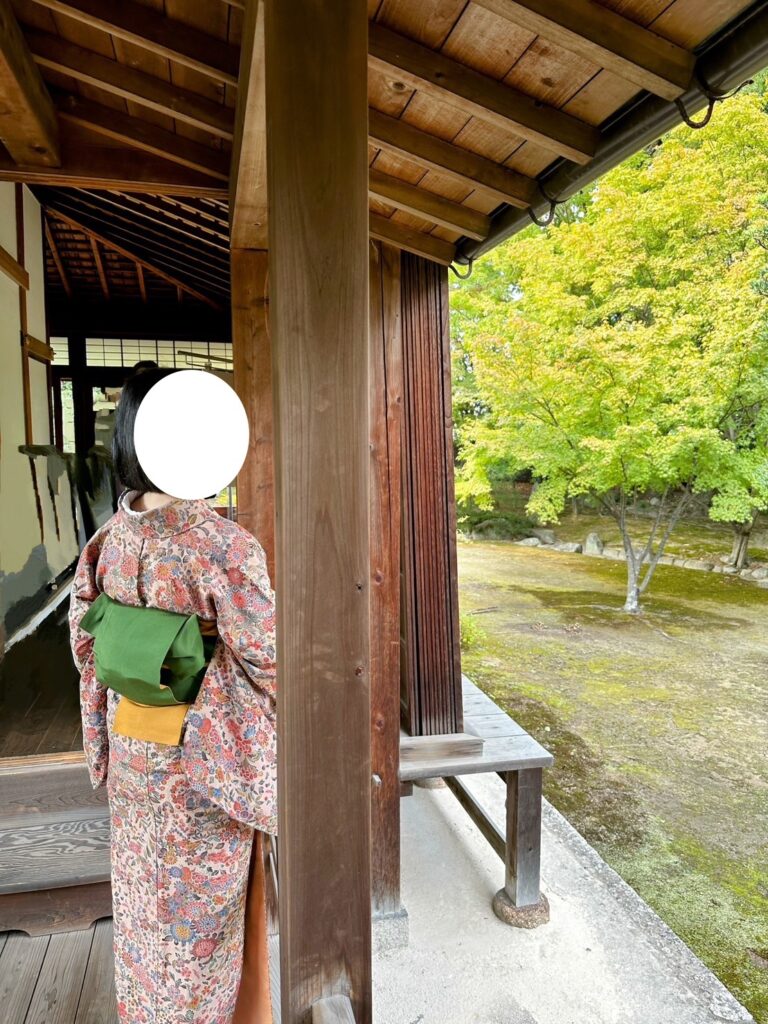
Planning Your Visit: Practical Information
When: The exhibition is held annually (this year marks the 122nd iteration) Where: Chokushijotenzenji Temple, Fukuoka City
Cost: Free admission
Why This Exhibition Matters for Cultural Understanding
Attending the Hakata Weaving Exhibition isn’t just about seeing beautiful textiles – it’s about connecting with a living tradition that has been passed down through generations. In our fast-paced digital world, there’s something profound about witnessing craftsmanship that requires years to master and represents centuries of cultural evolution.
Whether you’re a textile enthusiast, a culture lover, or simply someone who appreciates beautiful things, this exhibition offers insights into Japanese aesthetics, craftsmanship, and the deep connection between art and spirituality.
Final Thoughts: A Cultural Experience We Won’t Forget
The Hakata Weaving Exhibition represents everything beautiful about Japanese cultural preservation – tradition meeting accessibility, craftsmanship meeting community, and art meeting everyday life. Whether you’re a first-time visitor to Japan or a long-time resident, this exhibition offers a unique window into the soul of Japanese textile artistry.
As I plan my outfit for this year’s exhibition, I’m already excited about which kimono coordination I’ll choose and what new textile techniques I’ll discover. There’s something magical about being part of a tradition that has brought people together for over a century to celebrate the marriage of function and beauty.

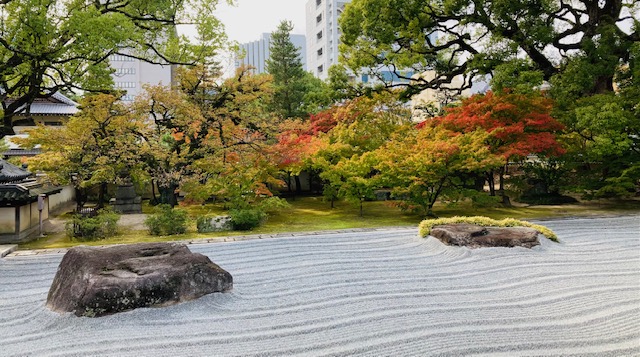


コメント